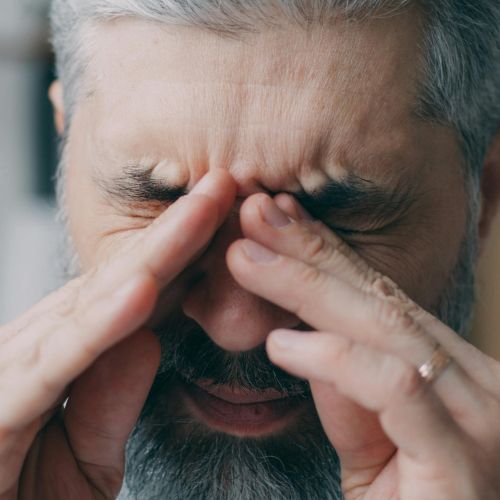
If you’re in your 40s or 50s and suddenly finding reading a little harder than it used to be, you’re not alone. One day you’re reading a message on your phone with no trouble, and the next you’re stretching your arm out, chasing the right focus distance like it’s a game of optical hide-and-seek.
Menus look dim. Bedtime stories feel like an eye workout. Someone hands you a spreadsheet at work and you wonder: Have they printed this in size 6 font?
If that sounds familiar, welcome to presbyopia – a perfectly natural change in vision that happens to us all.
What Is Presbyopia?
Presbyopia literally means “ageing eye”, but don’t let the name put you off. It’s not a disease. It’s not a sign of poor health. It’s simply a natural change that affects how we focus on close objects.
Inside your eye is a flexible lens that changes shape to focus at different distances – like a camera autofocus system. When we’re young, this lens is soft and elastic. Over time, it gradually becomes firmer and less flexible. As a result, it becomes harder to focus up close, especially in lower light or after long periods of screen work.
That gradual stiffening of the lens is presbyopia.
✅ It happens to everyone
✅ It usually starts between ages 40–50
✅ It gets gradually more noticeable over time
✅ It can be corrected very easily
Is Presbyopia the Same as Long-Sightedness?
No. They’re often confused, but they’re not the same thing.
| Condition | What it means | Affects |
|---|---|---|
| Presbyopia | Age-related loss of near focus due to reduced lens flexibility | Everyone (eventually) |
| Long-sightedness (Hypermetropia) | Eye is slightly too short, affecting overall focus | Can affect any age |
Can You Prevent Presbyopia?
In a word: no. It’s as natural as grey hair and birthdays. But although you can’t stop it, you can make life much easier with the right lens solution.
And that’s where things get interesting — because modern lens technology has come a long way.
The Best Lens Solutions for Presbyopia
1. Reading Glasses
The simplest option. Single-vision reading lenses give excellent near clarity — perfect for books, crafts, phones and paperwork. Ideal for occasional use.
2. Anti-Fatigue / Digital Lenses
Perfect for early presbyopia and anyone who spends long hours on screens. These lenses give clear distance vision but include a small boost in power at the bottom to reduce eye strain and tiredness when reading.
3. Office / Indoor Lenses
Designed for computer users. These lenses give wide, comfortable vision from reading distance to 1–4 metres — ideal for multitasking across screens, desk work and office environments. They’re also great in the kitchen, workshop or studio.
4. Varifocal Lenses
Your “everyday everything” lens. Varifocals provide distance, intermediate and reading vision in one lens, letting you move naturally throughout your day without constantly swapping glasses. Modern premium varifocals offer smooth transitions and outstanding clarity.
5. A Second Pair for Comfort & Convenience
Many people find that one pair simply isn’t enough. Think of lenses like tools — one pair may not suit every task. For example, someone might wear varifocals most of the time but choose a second pair of office lenses for screen-heavy work to reduce neck and eye strain.
Why Jacksons Often Recommends a Personal Lens Plan
Your eyes are as individual as you are. Your job, lifestyle, screen habits and hobbies all influence your visual needs. That’s why at Jacksons Styling Opticians we don’t just give you a prescription — we create a personal lens solution tailored around how you live.
Our expert team combines optical precision with frame styling and lens design consultation, helping you see clearly and look exceptional.
Final Thoughts
Presbyopia is a normal part of life — but living with eye strain, tired eyes or blurry print doesn’t have to be. Whether you read for pleasure, work on screens all day or simply want to feel more comfortable visually, there is a lens solution that fits your lifestyle.
Ready to See Clearly Again?

